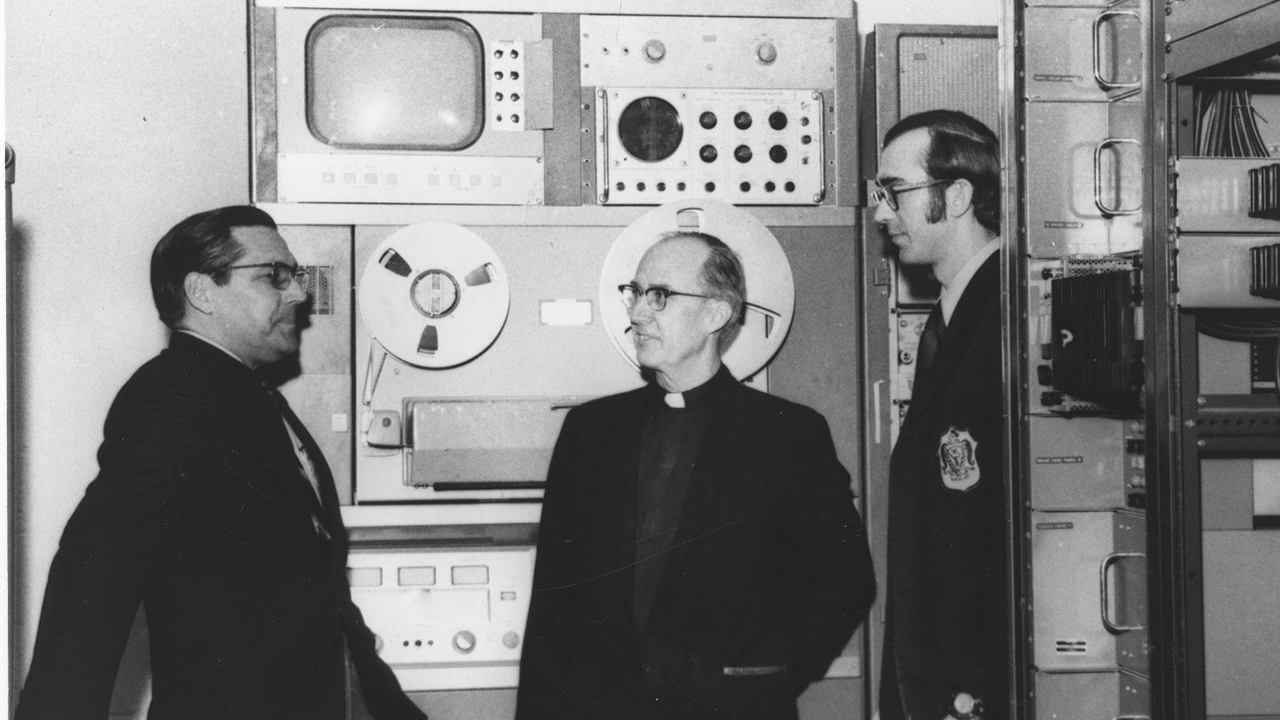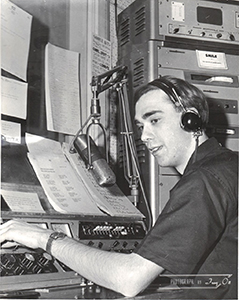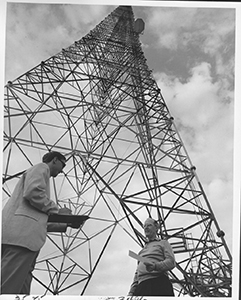
50 Years of Electronic Media at Xavier
Mar 3, 2023
Toward the end of his sophomore year at Xavier University, Jay Adrick trekked over to Alter Hall with Father Larry Flynn, S.J., the new chair of Communication Arts, to meet with Father John Felton, S.J., dean of students. Adrick thought they were going to discuss a report he’d written about a proposal to take over the old WCPO television studio and convert it into a teaching space for Communication Arts students interested in the booming world of television.
Instead, the black-frocked priests offered the 19-year-old Adrick a job. “They said they decided to accept the offer of the WCPO studios – and we’d like to offer you a job to be the engineer and manage the studio,” Adrick said.
 A job offer was not what he’d been expecting. But it was 1967, and as someone with a keen interest in shaping the future of television, Adrick knew it was the perfect opportunity for him. He never imagined the opportunities it would provide countless others who, over the next five decades, would become award-winning graduates of a popular academic program and go on to work as content creators in television, news, film, sports and broadcast industries yet to be created.
A job offer was not what he’d been expecting. But it was 1967, and as someone with a keen interest in shaping the future of television, Adrick knew it was the perfect opportunity for him. He never imagined the opportunities it would provide countless others who, over the next five decades, would become award-winning graduates of a popular academic program and go on to work as content creators in television, news, film, sports and broadcast industries yet to be created.
At the time, Adrick was working his way through college at a local radio station and was also the student engineer for Xavier’s radio station. Flynn and Felton had asked him along to tour the WCPO facility on Symmes Street and write a report. After Adrick determined the abandoned studio could be made operational again, Flynn, Felton and President Paul O’Connor, S.J., decided he was just the man for the job.
“They said we’ll pay you a salary and give you tuition, and we’ll let you work around your academic schedule. But you’ll have to quit your job at the radio station,” Adrick said. “I said, ‘I’m on board.’”
FROM SYMMES STREET TO BROCKMAN HALL
Adrick spent the summer poring over manuals for the cameras, lights and video equipment WCPO had left behind and, with the help of some part-time HAM radio operators, made them operational again. He and Flynn drove to Kansas City to pick up an old video tape recorder to install in the studio. They cleared out, cleaned up and repainted the space, and by the start of spring semester in January 1968, Xavier’s first television studio was ready for students.
Adrick graduated in 1969 but joined the faculty in 1971 and became the Director of Radio and Television. In 1973 he oversaw the move of the studio to the reception area of Brockman Hall. They built control rooms, installed computer flooring, modified a lighting grid system and brought in all the equipment from Symmes Street. “The dorm rooms above the studio were turned into classrooms, a dark room, offices and a lab, and it was operational by the start of school in fall 1973 with WCPO cameras and tape machines,” he said.

The TV studio was supposed to be temporary, but it still operates today in the same Brockman Hall space that Adrick renovated in 1973. Though most of the technical equipment from those early days has been replaced, the computer flooring, offices, sound room and lab space remain. Yet up on the ceiling, among a bank of studio lights, is one with a WCPO label in white letters. He’s sure it’s an original 1940s-era vintage light from the old Symmes Street studio.
“That Xavier facility was built as a studio 50 years ago,” Adrick said. “The technology inside has changed dramatically, but the building has not.”
Adrick went on to a remarkable career in broadcast technology and digital television, but he wanted to give back to the program that had launched his career. He got his chance when he and a core group of former Xavier colleagues and alumni came back to campus in the fall of 2021 to celebrate the 50th anniversary of WVXU Radio.
After touring the TV studio and meeting with students, they created TEDI – The Endowment for Digital Innovation – to recognize outstanding students and provide financial support for new equipment and technology for the program, which was renamed Digital Innovation Film and Television (DIFT) in 2015.
“We wanted to start an endowment to see if we can raise enough so that DIFT has a lifeline for growth and developing technologies,” said Mike Cutler, a 1975 graduate and former student of Adrick who worked as an award-winning television news producer. “We need to contribute today to be sure Xavier is on the leading edge of technology and Xavier students graduate with the ability to tackle whatever job they envision.”
Read more in part two of our series on the history of the DIFT program at Xavier.
-
1963 - First radio station at Xavier in Alter Hall
-
1965 - Xavier upgrades Communication Arts from a minor to a major
-
1968 - First TV studio at old WCPO Symmes Street studio off campus
-
1970 - Radio station on campus becomes WXVU
-
1971 - Jay Adrick returns as Director of Radio and Television and Communication Arts Instructor
-
1973 - TV Center moves to Brockman Hall on campus
-
2008 - Blis DeVault becomes director of the program which is renamed Digital Innovation,Film and Television (DIFT)
-
2021 - Jay Adrick and fellow alumni return for a reunion and create the Endowment for Digital Innovation to support DIFT program.